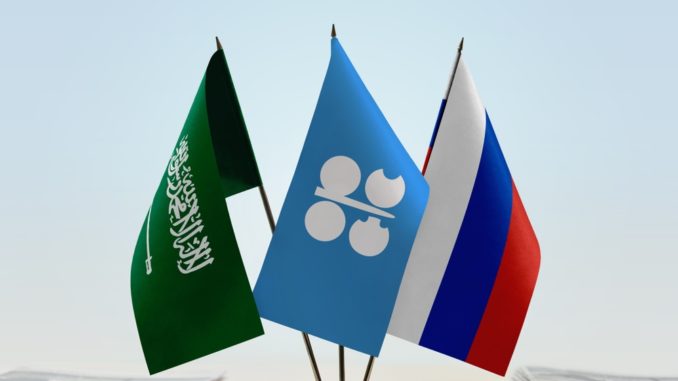
Article written by Cyril Widdershoven via OilPrice.com
The OPEC+ “club” countries are on the brink of a financial crisis based on the latest economic assessment done by the International Monetary Fund (IMF).
The IMF has presented a very bleak outlook for an economic recovery in the Middle East and Central Asia, predicting a 4.1% contraction for the region. The main driving factor behind this bearish outlook is the IMF’s forecast that oil prices will remain in the $40 to $50 range in 2021.
Though, Goldman Sachs, an American bank, is a bit more bullish, predicting that the price of oil will reach $65 next year.
However, under the IMF model, another year of their expected prices would prove disastrous, even for the lowest-cost producers.
In its statement, the IMF predicted an economic contraction of 2.8% in April for the Middle East and Central Asia. IMF director Jihad Azour highlighted a large disparity in the projected economic loss of oil-importing and exporting countries, forecasting a negative 6.6% growth for oil-exporting countries, compared to a contraction of 1.3% for oil-importing countries.
With many of the OPEC+ members being rentier-states (i.e. states which derives all or a substantial portion of its national revenues from the rent paid by foreign individuals, concerns or governments), the need for higher oil prices cannot be overstated. A vast part of the government budgets of OPEC member states depends on oil and gas-related revenues (ex. Saudi Arabia needs the price of oil to be higher than $80 to balance its budget). We have already seen Saudi Arabia triple its VAT and delay parts of its massive infrastructure project, Vision 2030.
Currently, Brent oil prices are still 40% below their pre-COVID levels.
There is little hope of a significant rise in prices any time soon as global oil and gas storage volumes are still at historically high levels, and demand looks set to dip again due to second wave COVID-related lockdowns. The frequently cited breakeven price for the Saudi government budget is $80 per barrel, although Saudi government budget discussions seem to expect a an oil price of $50. Iraq has also stated that it expects price levels of $50 per barrel for 2021.
These optimistic predictions seem to be based solely on Chinese post-COVID economic figures, which have proven to be highly unreliably and don’t take into account the fact that global demand for Chinese products will also need to pick up. The impact of the second wave of COVID cases in Europe and America will undoubtedly hurt this demand for Chinese goods.
However, the impact of a second wave of COVID 19 will sting much more for OPEC+ members. The major oil market jam up and storage glut has been largely overlooked recently, but it still very much exists. Reports of demand recovery in some markets appear to be more wishful thinking spurred by multi-trillion-dollar cash injections rather than a viable economic recovery.
As a result of COVID 19, OPEC+ members can no longer afford to base their economic stability and future on hydrocarbons alone. Economic diversification has to made a top priority, even if the effects won’t be felt for years. Government budget cuts are imminent and could destabilize the region if not done properly. Instability is not only increasing in the Arab producer regions, but also in Russia, where ongoing sanctions and the pandemic are causing major issues.
Furthermore, OPEC+ members cannot simply bet on the death of U.S. shale, as it is an industry that has proven incredibly press resistant. US shale will almost certainly reemerge, possibly in a different form, but it is reasonable to assume the sector itself is far from dead. Even under a Biden administration, Shale will likely play a big part in America’s energy independence.
Leaders in Riyadh, Abu Dhabi, Moscow, and Kuwait City now have to find a new way to survive.
Adapt or die …
Works Cited:
